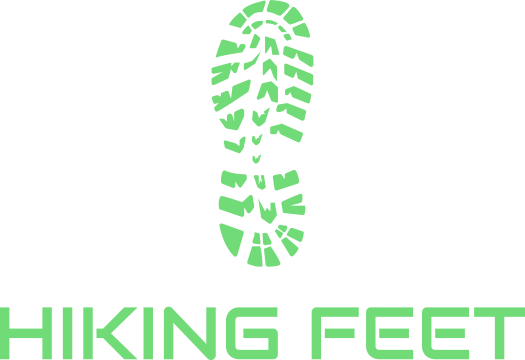Should you buy hiking boots, hiking shoes, or trail running shoes for your hikes?
Your best choice depends on a number of factors, such as what kind of terrain you hike, how healthy your feet and ankles are, how much weight you're carrying, and how much hiking and backpacking experience you have.
That's because hiking boots, hiking shoes, and trail running shoes each have their benefits—and drawbacks. This post walks you through the pros and cons of hiking boots vs shoes, so you can make the smart choice for your body and your hikes.
hiking boots vs shoes vs trail runners
Today's hikers have several choices for hiking footwear:
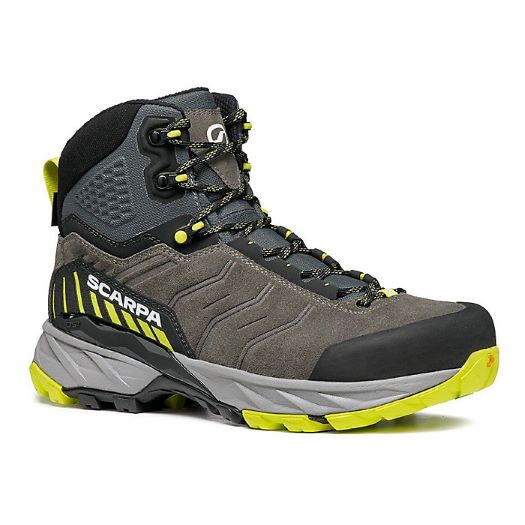
Hiking boots
BEST SUPPORT AND WEATHER PROTECTION
Hiking boots usually offer the best foot and ankle support, durability, and weather protection—thanks to their sturdy soles and ankle collars, protective uppers, and stiff shanks or chassis. But that also means boots usually will weigh more than shoes and take longer to dry if they get soaked. Hiking boots are most popular with backpackers, people with foot or ankle concerns, and day hikers who care more about support than about weight or price.
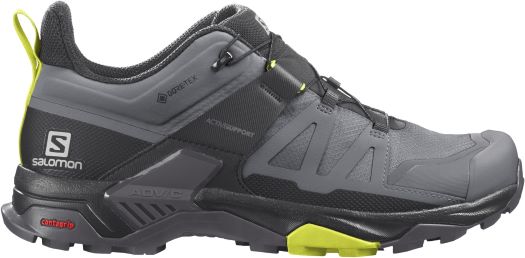
Hiking Shoes
THE CLASSIC COMPROMISE
Hiking shoes are low-cut hiking boots or sturdy shoes made especially for hiking. Most hiking shoes are lighter than hiking boots and more supportive and durable than trail running shoes. At the same time, hiking shoes normally don't provide as much ankle support as hiking boots or as much weight savings as trail running shoes. Hiking shoes are a popular chioce for day hikers with light packs.
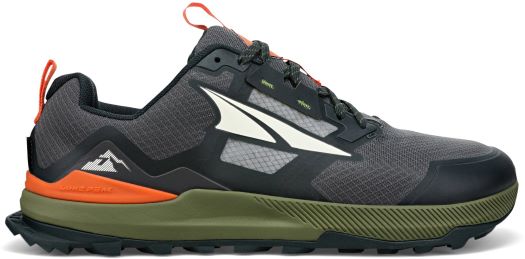
Trail running shoes
THE LIGHTWEIGHT OPTION
Trail running shoes are sturdier than road running shoes and typically lighter than hiking shoes—which appeals to hikers who value weight savings. At the same time, trail runners are made for running—not hiking—so they're not as supportive or as durable as most hiking shoes and hiking boots. Trail runners are popular picks for thru-hikers on long-distance trails, fast hikers with light packs, and casual hikers who don't need much support for the trails they hike.
How to choose: hiking boots vs shoes
One way to choose between hiking boots vs. shoes is to decide if you're most concerned about support, weight, or budget:
- If support is most important to you, you should start with a good hiking boot or one of the sturdier hiking shoes.
- If you prefer something lightweight, you might start with the best trail running shoes for hikers.
- To balance weight savings with support, you might start with the best hiking shoes or best lightweight hiking boots.
Budget is trickier.
Hiking shoes are probably the best option for budget-oriented hikers. They usually cost $20-$30 less than hiking boots with a similar (or slightly shorter) lifespan.
Hiking boots often cost a little more up front. However, they may last a little longer than hiking shoes and may last significantly longer than trail running shoes. If you hike hard trails or high miles, hiking boots may ultimately provide the most bang for your buck, due to their durability.
Trail running shoes are deceptive, cost-wise. Not too long ago, trail runners were noticeably cheaper than hiking boots and shoes, but they also wore out hundreds of miles earlier. With growing demand, the best trail runners now cost about the same as true hiking shoes—and still need to be replaced more often. That means trail running shoes may be most expensive choice, long-term, at least if you hike a lot.

What's most important to you in hiking footwear—support, weight savings, or price?
trade-offs: support vs weight savings
As with most outdoor gear decisions, choosing between hiking boots vs shoes is about understanding the trade-offs—especially the tradeoff between support and weight savings.
For the most part, more supportive hiking footwear is going to cost you in weight. A good pair of hiking boots may weigh a half-pound more than hiking shoes and a pound more than trail running shoes.
Likewise, lightweight footwear usually costs you in support, protection, and durability—and often in cushioning. Swapping a mid-cut hiking boot for a low-cut hiking shoe may shave several ounces, but that also sheds ankle support and weather protection in the process. Similarly, trail runners are usually a step or two below hiking shoes and (especially) hiking boots in support, stability, foot protection, and durability—which may result in more foot, ankle, or toe injuries.
For most hikers and backpackers, it makes sense to buy the lightest option that provides the support your body needs for the hikes you do.
But how much support do you need?
That depends on your feet and ankles, the trails and terrain you hike, your pack and body weight, your hiking and backpacking experience, and your hiking style.
hiking boots vs shoes: support
Generally speaking, hiking boots are more supportive than hiking shoes, which are most supportive than trail running shoes. Here are some quick rules of thumb to determine how much support you may need for your body and your hikes.
In general, hikers need MORE support if they

I choose supportive hiking boots for hard terrain and a heavy pack
Hikers may be fine with LESS support if they

fast & experienced hikers sometimes prefer hiking shoes or trail runners
The key is to know yourself as a hiker—to get enough support, but not too much support.
If you buy lightweight footwear that does not provide your lower body with enough support for the trails you'll be hiking, you increase your chance for lower body injuries. But the opposite can sometimes be true, too. If you're wearing footwear that's too stiff and heavy for the kind of hiking you do, you won't be as comfortable as you could be—and may even get hurt.
That's why outdoor industry professionals don't recommend whatever they wear to other people (like the amateurs on Facebook do). The people who know the most about hiking footwear will ask qualifying questions to gauge what a hiker might need: Where will you do most of your hiking? What's the terrain like? How strong are your feet and ankles? How much weight will you be carrying?
A hiker's answers will suggest if hiking boots, hiking shoes, or trail running shoes might make the most sense.
benefits of weight savings

many thru-hikers choose trail running shoes for their weight savings
Right now, there's a clear trend toward lightweight hiking footwear in the outdoor industry. That means that more hikers are choosing trail runners (or hiking shoes)—either for their lighter feel or their potential energy savings.
Experienced trail runners often like the feel of hiking in trail running shoes. They're not as heavy, stiff, or supportive as dedicated hiking shoes or (especially) hiking boots. If you're a fast hiker or long-distance hiker, you may feel fresher and faster in trail runners— whether you're actually hiking faster or not.
Weight savings may also equal energy savings. That is, hikers may burn fewer calories in trail runners (lightest option) or hiking shoes (~2 pounds) than in hiking boots (2-3 lbs/pair).
However, it's a myth that one pound off your feet is like taking five pounds off your back.
The few, flawed studies of the energy costs of hiking footwear suggest that fast hikers (3-4 mph) may save a little energy (≤1-2%) with lightweight footwear—not a lot. However, the average hiker probably doesn't hike fast enough (or far enough) to save energy by switching to lightweight hiking boots, hiking shoes, to trail running shoes.
That means it's fast hikers and long-distance hikers who have a little to gain from lightweight footwear. Here are my recommendations for the best lightweight hiking shoes and best trail running shoes for hikers.
costs of weight savings
Lots of people want "lightweight" hiking footwear. Fair enough. However, weight savings also has its costs.
Footwear companies cut ounces by cutting down their ankle cuffs, thinning their outsoles and uppers, eliminating protective toe caps, cutting cushioning, and so on. Any of those cuts can increase your odds for foot, ankle, and toe injuries.
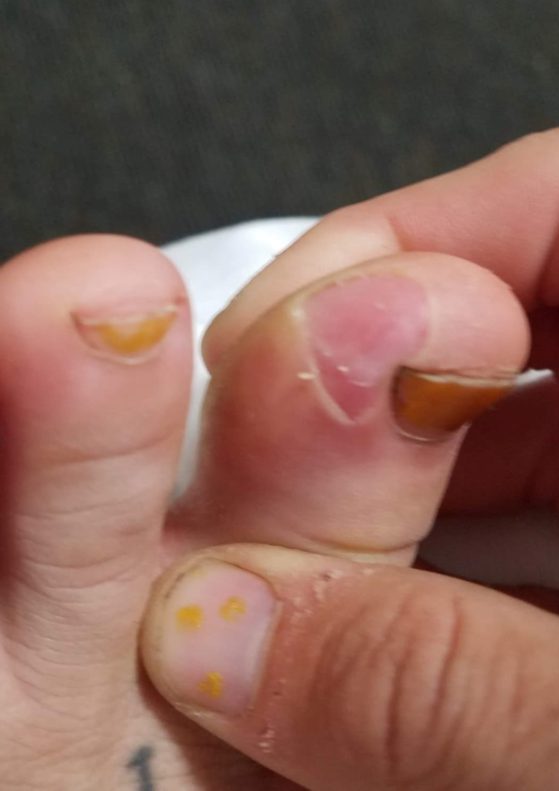
The popularity of trail running shoes has coincided with a sharp increase in hiking-related injuries. These injury rates cannot be pinned solely on trail runners because the number of new hikers has also increased. Statistically, it's hard to unpack which injuries can be attribued to trail running shoes vs. inexperienced hikers vs. inexperienced hikers wearing trail running shoes.
In my hiking communities, however, EMTs, wilderness first responders, and park rangers have shared that most of their injury-related rescues now involve hikers in trail running shoes. Likewise, some leading brands do not recommend hiking in their trail runners—presumably to shield themselves from lawsuits from the growing number of injured hikers (especially thru-hikers).
Less weight usually means less durability, too.
As a rule of thumb, good trail running shoes are made to be replaced every 300 miles or so. On average, hiking shoes and budget hiking boots should last about 50% longer. Good hiking boots may last twice as long as trail running shoes or longer. I've gotten as much as 1400 miles out of a midweight hiking boot—and as little as 60 miles out of a couple pairs of expensive trail running shoes.
So there are significant economic costs and environmental costs (more shoes in landfills) associated with lightweight footwear, especially trail running shoes.
hike your own hike
When weighing hiking boots vs shoes, it's worth considering a common saying among experienced hikers: "hike your own hike." That is, you can buy and wear whatever you want—as long as it helps you get outside and keeps you safe.
At the same time, it helps to understand the trade-offs of hiking boots vs. shoes. Each type of outdoor footwear can be a good option. However, each choice carries potential pay-offs and drawbacks, too. Smart hikers understand the pros and cons of each type of footwear to weigh the potential risks vs rewards. The key is to understand yourself as a hiker—to pick what makes the most sense for your body, your hiking style, your experience level, your pack weight, and your preferences.
This post should help you sort through your options, so you can hike safely and comfortably—in whatever you choose.
Hike your own hike.
